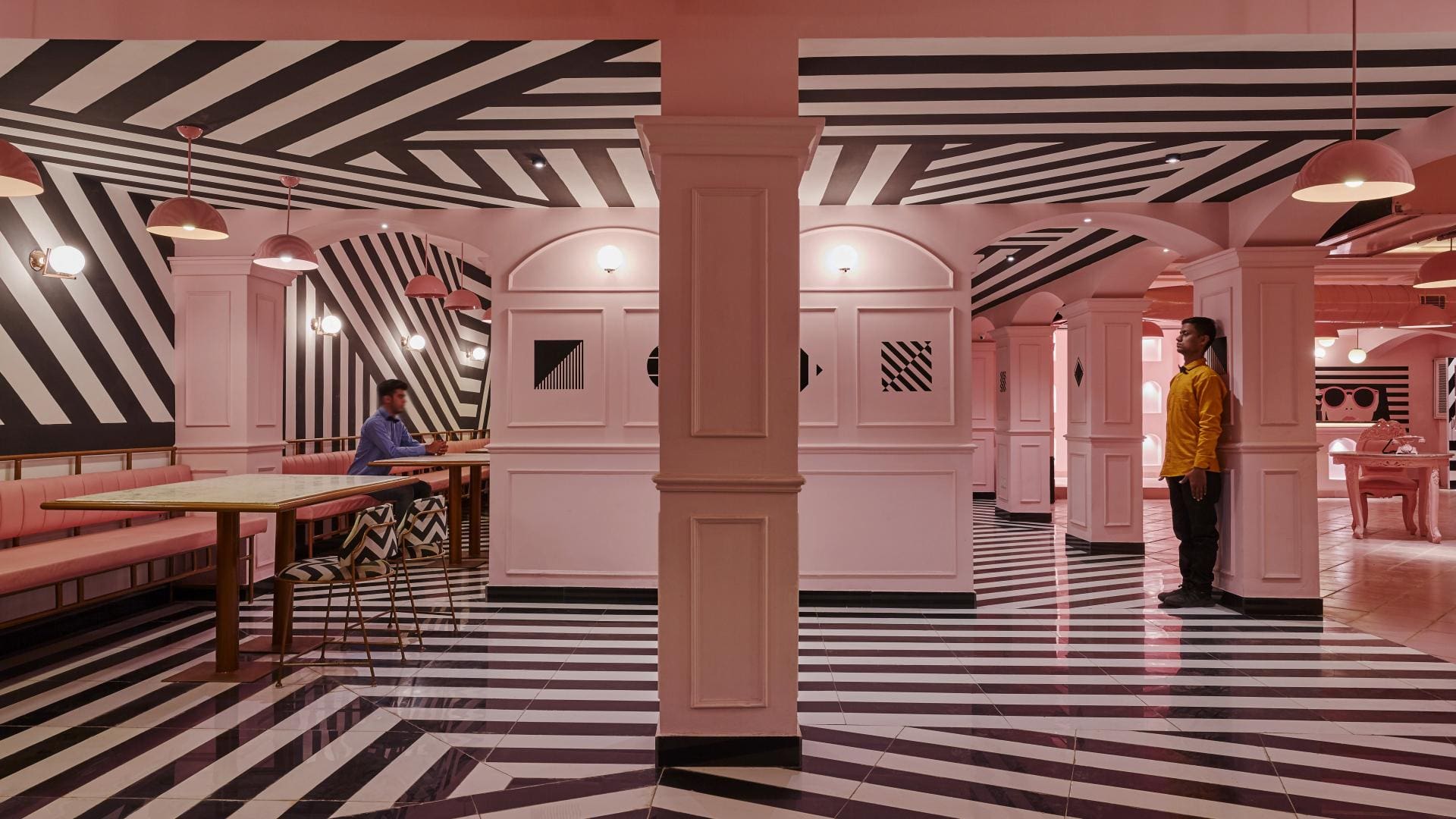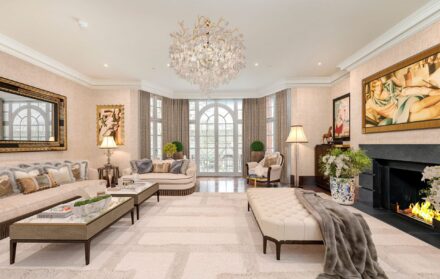
The modern designers inspired by the Memphis Movement
"Memphis opened many doors to an individualistic postmodern approach, demonstrated now by the freedom designers have today."
It all started with Bob Dylan. On a December night in 1980, the crooner’s Minnesota twang floated out from the stereo and through the rooms of Ettore Sottsass’s apartment on Milan’s Via San Galdino, where the designer was hosting a group of architect friends. Already a design dignitary, Sottsass had made his name in 1969 with Olvetti’s cherry-red Valentine typewriter – a product Apple would later look to for inspiration when designing its ubiquitous iPods. He was due to create a new line of furniture with carpenter Renzo Brugola, and had gathered his cohorts for a brainstorm.
With Dylan as their soundtrack, the team set to work. They wanted an antonym to the design establishment of the time, which was obsessed with minimalism and mid-century modern aesthetics, and averse to the bright prints and hues Sottsass loved so much. His was a vision of colour, a marriage of Art Deco and Pop Art but bigger, bolder and brasher than before – an 80s reincarnation of the two. The Memphis movement was born, and its moniker cherry-picked from the song of the night: Dylan’s Stuck Inside of Mobile with the Memphis Blues Again.

A postmodern mismatch of furniture, fabrics, ceramics, glass and metal objects was envisioned by the 21-strong group. Geometric shapes, pastel and neon hues, terrazzo tiling, monochrome stripes and, perhaps most whimsical of all, squiggles, were thrown into the kitsch mix and presented at the 1981 Salone del Mobile in Milan. The debut was shocking, contrasted as it was against the clean, angular creations of the time, but the group wasn’t fazed – sticking a proverbial two fingers up to the design establishment was at the core of the movement.
“It is misleading to think about Memphis as a style. The images that everyone saw in magazines and during the exhibitions were of lesser importance than our intentions,” Memphis group member George Sowdon says in More is More by Claire Bingham. “We wanted to be free of the set of rules that modernism had become, which were no longer sufficient to satisfy the needs and the changes taking place in society. These rules were holding back the experimentation needed to take a fresh look at what design was all about. You could argue, as with all events that call into question the validity of established ways, that Memphis was the style of dissent.”

Although the Memphis team continued to show at the festival for the next seven years, by 1988 it had disbanded, its founder having jumped ship three years earlier. Short-lived though it was, the Memphis canon was seminal, and has been revered by some of the world’s top creatives. Karl Lagerfeld was a fan and bought the entirety of Sottsass’s first collection, decorating his Monaco home in homage to the movement. David Bowie, too, was an admirer, and when his art collection was auctioned off at Sotheby’s for £1.3m in 2016, more than 400 of his treasures were found to be Memphis creations – among them Michele De Lucchi’s Flamingo side table, Peter Shire’s Bel Air armchair and Sottsass’s Carlton room divider. Even in fashion, Memphis has had its moment – Christian Dior’s AW11 couture collection paid tribute to the group with frothy technicolour skirts in pastel shades, terrazzo-style dresses and geometric headpieces.
In 2019, Memphis seems even more modern and all the more collectable – helped by the fact that many Memphis designs are still in production by Memphis Milano today. Even those less keen on the movement cannot deny its enduring influence on contemporary designers, whose boundless creativity, Sowdon argues, is in thanks to Memphis. “In 1982, the British design and architecture critic Jonathan Glancey wrote that ‘Memphis was pernicious,’ and he was right,” he says. “Memphis opened many doors to an individualistic postmodern approach, demonstrated now by the freedom designers have today.”

In More is More, Bingham showcases the contemporary homes and designers inspired – whether directly or indirectly – by the group, from the 46th Annual Kips Bay Decorator Show House, which was given a Memphis-style makeover by Sasha Bikoff in 2017, to Feast India Co’s Kanpur-based restaurant and bar, for which studio Renesa was commissioned with the design directive ‘how do we dip a zebra into a deep pink sea?’
“There was something so wrong feeling about the Memphis aesthetic – so contrary to the zeitgeist of the time – that it appealed to my sense of the perverse,” says interior designer Tom Barlett, who created a Memphis mecca in Cara Delevingne’s London home. “There is a certain ugliness and brashness to it that at the time probably seemed punkish, but now seems charming.”

The pair worked together to collate a postmodern medley of furniture and objects, both old and new – from Sottsass’s Carlton room divider in the living room to a mismatch of Memphis-inspired chairs by 21st-century design houses Moustache, Gubi, L’Abbate and Mattiazzi in the kitchen. Even the bathroom, although not typically Memphis in style, takes cues from the movement in its whimsy – the walls feature a hand-painted mural of an azure blue sky by Sarah Hocombe, decorated with three luminous balloon lights by CrousCalogero for Estiluz.
Camille Walala, a textile, graphic and interior designer, is another creative who has reaped the fruits of the Memphis group’s labour. Her Memphis-style prints have brought buildings to life across the globe, from London to New York. Head to Singer Street in Shoreditch to see her Dream Come True design on the face of Splice’s office building; Brooklyn’s Industry City to see her trompe l’oeil creation painted on the exterior of a warehouse block; or to Ohio, where she revitalised a 1920s bank-turned-yoga studio with a riot of colour.

Jonathan Adler, whose homeware and soft furnishing designs have been described as ‘neo-Memphis’, takes saccharine shades and pairs them with kitsch emblems, from rainbow Perspex dishes to acrylic sculptures crafted in a menagerie of shapes. At the heart of Adler’s work is a tongue-in-cheek playfulness that captures the essence of Memphis. Think rainbow pots decorated in candy stripes and labelled ‘LSD’ and ‘Hash’; neon needlepoint cushions carrying the missives ‘Boss Lady’ and ‘Benevolent Dictator’ and a ceramic menorah in the shape of a sausage dog.
Even millennial pink, the saccharine shade that first reared its dainty head in 2012, can be traced back to Memphis – it was Sottsass’s hue of choice. For inspiration, look no further than India Mahdavi, whose sugarplum tearoom at Sketch has won a slew of design awards and many a social media post.

In essence, Memphis’s biggest imprint of all is simply the desire to not take design too seriously. It’s a sentiment that’s perhaps best summed up by group member Peter Shire who, when asked what he thought made Memphis so remarkable, responded: “Aretha [Franklin] was asked a similar question. The guy said: ‘What do you think makes you so good’? You can see her reel back, then she thought about it and said: ‘Well, you know, you’ve got to have something going on’. That’s probably about it. There was something going on.”
More is More by Claire Bingham is out now, £29.95, published by teNeues, www.teneues.com








